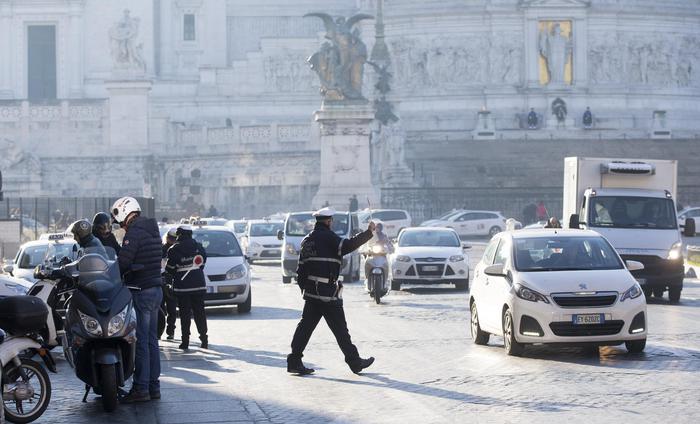Enlarge image
Pedestrians among car exhaust fumes in Berlin (2018)
Photo: Sean Gallup / Getty Images
Citizens can now take part in a survey on stricter limit values for clean air (here).
As the EU Commission announced on Thursday, the answers will be incorporated into the ongoing process of revising air quality guidelines.
With this, the EU Commission wants to adapt limit values to new standards of the World Health Organization (WHO), among other things.
The WHO recommended stricter maximum values for fine dust and nitrogen dioxide (NO2), among other things, on Wednesday.
According to this, for example, the annual mean should only contain 10 micrograms of nitrogen dioxide per cubic meter in the air.
The EU still allows 40 micrograms per cubic meter.
In 2019, all urban measuring points close to traffic in Germany would have exceeded this new WHO guideline value (read more here).
The EU Commission's online survey is open until December 16.
In addition to citizens, organizations, companies and authorities are also invited to participate.
Biggest environmental health threat in Europe
Stricter limit values could be relevant for users of diesel vehicles, among others, since diesel cars are the main source of nitrogen oxide in cities.
According to the EU Environment Agency EEA, air pollution is the greatest environmental health threat in Europe.
According to the EU Commission, around 400,000 people die prematurely in the EU every year because of bad air.
The indication of premature deaths is criticized because it remains unclear how much life is lost, but it does at least provide an impression.
According to the EU Commission, the economic damage caused by air pollution - for example due to diseases, poor harvests or damage to buildings - amounts to 330 to 940 billion euros per year.
In 2019, in the majority of EU countries, at least one value exceeded the current statutory limit values, which are often well above the WHO recommendation, shows an EEA report on Tuesday.
jme / dpa






/cloudfront-eu-central-1.images.arcpublishing.com/prisa/VPFDJ6LOFBD4DJB77PGQNQCUCE.jpg)